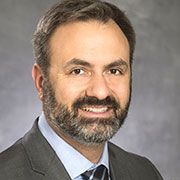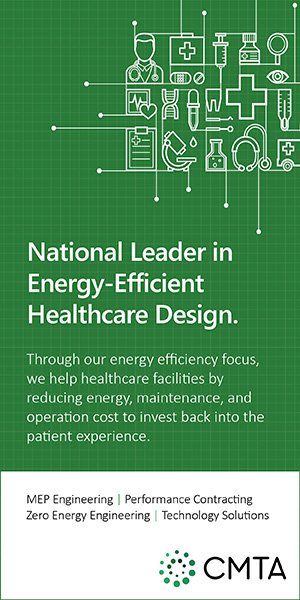Interview
A Community Safety Net — A State-wide Asset
Trevor Sawallish, CEO, North Memorial Health
Please tell us about the size and scope of North Memorial Health.
For 70 years, North Memorial Health has been an independent health care system focused on empowering patients to achieve their best health. We’re made up of two hospitals, 25 clinics, 50 medical specialties, and one of the largest air/ground ambulance systems in the country. We have provided a Level 1 Trauma Center for 25 years and employ 350+ care providers and 6,500+ team members who are dedicated to delivering a more connected experience for our patients. One of our service lines is the North Memorial Health Maple Grove Hospital, a top destination in the state for labor and delivery, with more than 5,000 births annually. Our Robbinsdale hospital serves some of the most racially diverse, underserved, and at-risk communities in Minneapolis and the state, making North a critical safety net hospital for members of these communities. Our air/ground ambulance systems also serve communities across Minnesota, including many rural communities that have limited access to critical care services.
What are the top priorities for your tenure as CEO?
First and foremost, we are about caring for people, our communities and our patients. But we must earn the right to do that great work, which means we’ve got to find a path where we can be sustainable, financially, over the next several years and decades beyond. North Memorial Health is navigating a severe financial crisis, primarily due to our high volume of patients insured through Medicaid and Medicare. This is a pivotal moment for our future. 74% of North–Robbinsdale Hospital’s reimbursements come from Medicaid and Medicare, highlighting our critical role as a safety net for the community. My focus will be on how we uphold our commitment to the communities we serve and maintain the unique services we offer. This includes operating as efficiently as we can, innovating within North and with others in the health care community on new ways to provide high quality, high value care and working to address the gap in funding associated with our unique payer mix.
How are things coming with the Maple Grove expansion and what does its future hold?
Our focus is on expanding patient care capacity for the rapidly growing community, especially in the areas of emergency, imaging and in-patient services. Maple Grove Hospital is consistently busy, and we have far exceeded the volumes we anticipated for many key areas including our emergency department, surgery, and our labor and delivery areas. We are fortunate to serve Maple Grove and surrounding communities and are grateful for our patients who choose us for their care, and it is our responsibility to grow to meet the needs of the community.
The speed in which we can advance expansion plans for Maple Grove Hospital is directly contingent on our short- and long-term financial stability during a time when headwinds are strong at our Robbinsdale Hospital. The success of Maple Grove allows additional investment in Robbinsdale Hospital.
Our trauma team has served nearly 50,000 patients and is proud of our 97% survival rate.
What are some things most people might not know about North Memorial Health?
North Memorial Health is a statewide asset. Our EMS—air and ground—are in operation all over Minnesota and are one of the largest air care and ambulance programs in the country. We lead the way in emergency care, treating more than 85,000 patients each year from all over the Upper Midwest and caring for nearly 115,000 patients annually in our emergency departments and serving numerous states.
We also provide one of the few level I trauma centers in the state. Trauma isn’t just what happens at the scene of the accident or in the critical moments spent in the emergency room. Our comprehensive trauma team becomes a patient’s co-pilot through the whole healing journey, from the time of the injury until patients return to their lives. For more than four decades, our trauma team has served nearly 50,000 patients and is proud of our 97% survival rate. We offer seamless, system-wide care, no matter the injury or the way you arrive in our hospitals. Our extensive resources create a solid comprehensive system to provide the fastest care, in the right place, at the right time.
North-Robbinsdale Hospital serves some of the most racially diverse, underserved, and at-risk communities in Minneapolis and the state and effectively operates as a Safety Net Hospital without the designation or special funding that goes with the designation. We operate a deeply urban hospital with a payer mix that is 74% government funded but lacks equivalent financial support.
We also an important employer with more than 6,500 team members. We are a key part of local economies in the communities we serve, and a vital hub where hundreds of independent physicians come to care for patients. Our provider and clinical affiliations are a strong and vibrant part of our independent culture and becoming more and more unique in this marketplace.
Please tell us about your emergency transport services.
North Memorial has one of the largest hospital-based air and ground emergency transport services in the country.
A legislative proposal that would have allowed patients to opt out of managed care would have resulted in a loss of millions of dollars. Our health system does not have a surplus of cash or other investments to offset these losses. Losses would directly impact the community we serve through workforce and service reductions, put our training program at risk, and potentially halt planning for updated facilities. As a safety-net provider with roots in the community going back to 1887, we annually provide approximately $115 million in uncompensated care and write off $60 million of care for underinsured patients. We do this while providing outstanding clinical care, educational programs that reach more than half of the providers working in the state today, and research to benefit our community. We would be at risk if this funding mechanism that is meant to alleviate financial strain on safety-net providers like us were altered without an adequate replacement funding source.
What can you tell us about the Minnesota Health Plan study?
In 2023, the Minnesota legislature approved a two-year study to understand what changes the state could make to the Medicaid program that would shift people away from Managed Care and understand the resulting tradeoffs. We support this analysis and are eager to partner with the state and other stakeholders to develop ideas for how our state Medicaid system can be improved upon and achieve the goals to improve patient choice, increase health equity and improve quality outcomes while enhancing financial stability for safety-net providers. The way health care is financed is far from ideal, a multi-faceted and complicated construction built over decades, so changes to the system must be carefully considered to avoid unintended consequences.
Delays in discharges cost Minnesota hospitals nearly half a billion dollars last year. What can you tell us about this complex problem?
Yes, that analysis from the Minnesota Hospital Association replicates a 2023 Minnesota Department of Human Services (DHS) voluntary survey of the state’s hospitals and health systems and found that there were nearly 195,000 avoidable patient days and unpaid care in 2023, and this cost hospitals and health systems an estimated $487 million in unpaid care. The human cost is when critical care is denied to a patient who needs it. If we are not able to discharge a patient when he or she is ready to move into a community setting, that is one bed fewer available for a patient in another hospital in Minnesota who requires our specialty care. In 2023, we turned away an average of 18 requests to transfer someone to our hospital each month. While this adds further financial pressure, more important it is a person who is unable to get the critical care needed, so lives are at stake.
Almost 70% of Minnesota hospitals experienced negative operating margins through the first half of 2023. What changes must be made to the health care financing system to address this?
We encourage the federal government to focus on protecting and expanding meaningful health insurance coverage and access to life-saving prescriptions and to invest in mental health, maternal health and child adolescent health. So much of the cost of health care today is because of a lack of access to preventive and supportive care and services early in life, which drives overwhelming needs for care and treatment. Specific to Hennepin Healthcare and safety-net providers, we advocate for greater alignment of federal reimbursement with the costs of care and hope to see payment methodologies in Medicaid and Medicare that recognize the challenges of caring for a disproportionate share of medically and socially complex patients.
Trevor Sawallish is the CEO, North Memorial Health.
MORE STORIES IN THIS ISSUE
cover story one
Physicians and Adaptive Change: The little med school on the prairie
By Cindy Firkins-Smith, MD, MHCI, FAAD
cover story two
Anatomy of a Cyberattack: The Change Healthcare incident
















